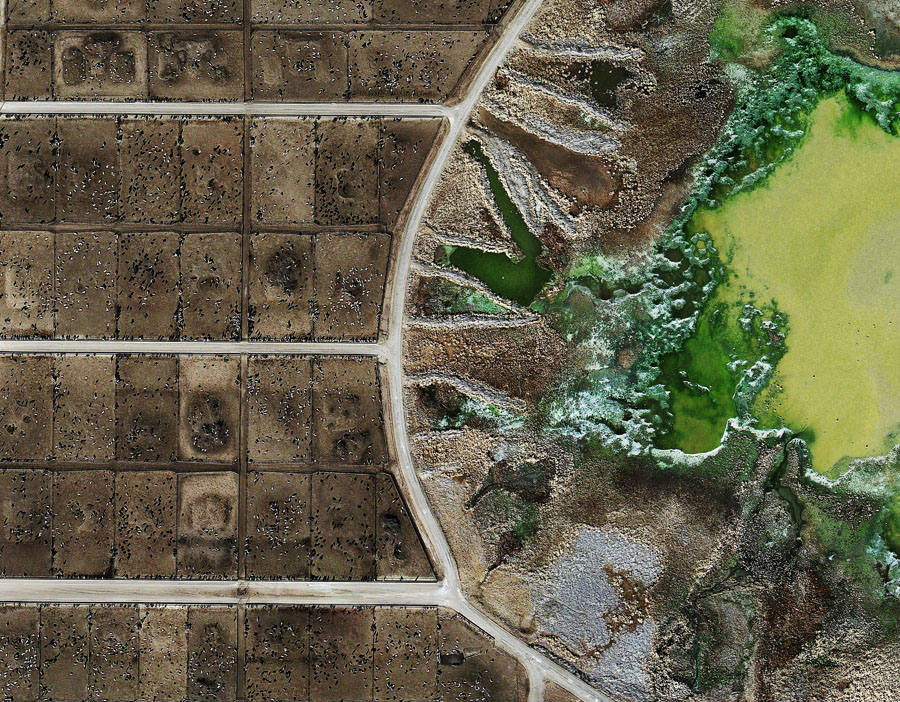"Factory" Feedlots From the Air. Where's the Context?
/Today I ran across fascinating images of so-called factory livestock farms from the air. The images themselves, I gather, are public, but these specific images were collected and slightly colored by a British artist.
I found the images in a Wired Magazine (online) piece whose author added this commentary.
Even for Americans . . . these sights are unusual. Industrial farming, especially of animals, tends to be hidden from public view — and under so-called ag-gag laws, that secrecy could become law.
The laws, so far enacted by Utah, Kansas, Arkansas, Iowa and Missouri, make it illegal to take undercover photos or videos on farms. Some proposed ag-gag laws would also cover zoos and puppy mills, and would officially label anyone who breaks them as a terrorist.
The author added, in other words, context, one that situates the factory feedlots in a social system shaped by conflict over who can/should see the farms. (The implication is clear, or at least clear to me: Factory feedlots are bad, and so are laws aimed at preventing outsiders from capturing images of them.) Ag-gag laws + feedlots surely = Something Bad.
The Wired reporter has created a context for readers. Fair enough. Here's my version of "context":
Take another look at the images. There's zero sense of scale. There's nothing that places the feedlot in relation to the rest of the terrain.
Intentionally or otherwise, the feedlots are presented in isolation. We have no information that offers scale relative to say, towns, houses, rivers, etc. The nearest town could be a hundred miles away.
And probably is. Such feedlots operations are typically (but not always) situated far from dense populations. In some locations --- eastern North Carolina, for example --- feedlots are clumped together. They cover a large area, but relative to the entire state of North Carolina, that area is small and the lots' impact is limited to the region.
Put another way, we Americans have created a system for making huge quantities of low-cost meat that relegates livestock production to a geographically small area relative to the U. S. as a whole.
Indeed, I'd take that a step further: many such feedlots have been built by companies that make meat for export, especially to Asia. So the true measure of the geographic context is not the continental U.S., but the much of the rest of the planet.
If we humans want meat, we have to raise livestock (unless, of course, the meat-in-a-lab thing takes off). One way to do so is on a large scale, focusing on price efficiency, and limiting the environmental impact to specific areas. We do the same thing with cities, by the way, only there we call it zoning.
So. Context. And, yeah, a decidedly politically incorrect way to look at factory feedlots. But . . . Context. Long view. Big Picture. The historian's curse.

